Comoros may be one of the world's poorest nations, but it's also one of the least visited. It can be hard to understand why this is the case, given some of the incredible experiences that await travellers.
In this ultimate guide to visiting Comoros I'll delve into what makes the archipelago in the Indian Ocean so special, despite the challenges it faces.
To start with, there’s a rich heritage: Portuguese traders, Swahili immigrants and Arab merchants have all spent time here, leaving behind various insignia as testimony. There’s also a swathe of natural wonders to pique curiosity, including Indigenous vanilla and ylang ylang plantations, the world’s largest active volcano and stunning rainforests (particularly on Moheli). There are also European legacies that endure, including use of French as one of the main languages (alongside Comorian, a Swahili derivative, and Arabic). Few people speak English.
But after having spent 16 days between the three islands, some less-than-ideal realities transpired: litter and waste disposal is problematic, leaving some areas of black lava rock (near the water) covered in trash; healthcare is basic, forcing those with slight affluence to get advanced care in neighbouring Madagascar or Reunion (although a large new hospital is currently under construction [2023]); infrastructure is limited, the country outside of Moroni (the capital and main city of Grande Comore) replete with pothole-littered roads and basic public services; and communication can be problematic if you don’t speak French or Comorian (no fault of Comorians).
As a result, tourism has never boomed which (selfishly for me) is ideal … but it hasn’t been so good for the economic development of Comoros.
Despite the trash, much of the nation (comprised of three main islands: Grande Comore; Moheli; and Anjouan) is environmentally pure, and rich in diversity. Comorians are kind, genuinely curious about visitors and obliging - personal safety is rarely compromised and ‘tourist-traps’ are uncommon. And getting around can be an adventure (albeit not always safe): flights are sometimes delayed or cancelled; and boats that link the islands can be overfilled and occasionally sink (but not the ferries - they are safe).

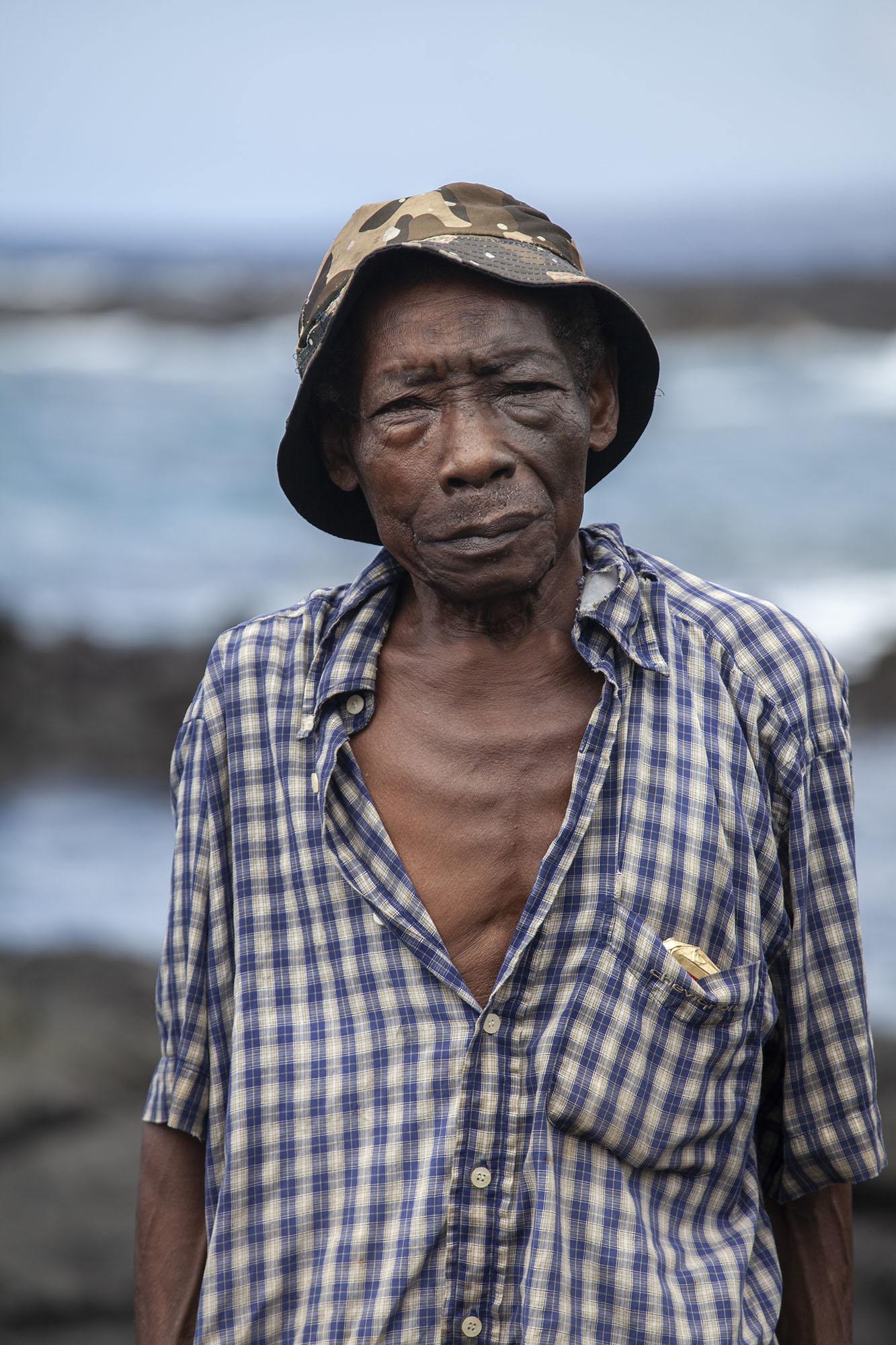

Although at times fuelled by frustration, the 16-day journey - in hindsight - was an adventure, a world away from the cookie-cutter tourist experiences one can have in some nearby African nations.
Would I return? Perhaps not. Am I glad I went? Yes, most certainly!
The rest of this ultimate guide to visiting Comoros outlines what I did during my stay as a solo traveller in the country, with titbits of practical advice peppered throughout and at the end, for your benefit.
Happy reading and travels!
Solo Travel Note Relevant to this Ultimate Guide to Visiting Comoros
Aside from typical frustrations of getting around, dealing with developing world realities, and circumnavigating the unofficial dual currency system, the only significant issue I experienced (fault of my own) was an inability to effectively communicate. My French is basic, and it limited the interactions I could have with Comorians.
I thrive on cultural exchange - talking to locals while sitting on a bus, walking in the street or shopping at a market, are some of my favourite interactions.
Given that I visited during wet season (known officially as the humid season, between December and April), I also halved my chances of meeting other travellers. So, I ended up with a touch of island fever; I felt isolated.
Conversing with others was a challenge. Google translate was minimally helpful.
The key? Knowing French.

Language aside, I never felt unsafe (even walking alone at night). It’s a great destination for solo travellers, perhaps even an ideal place (if you seek authenticity and untouched natural beauty with options for complete solitude) … particularly if you speak French!
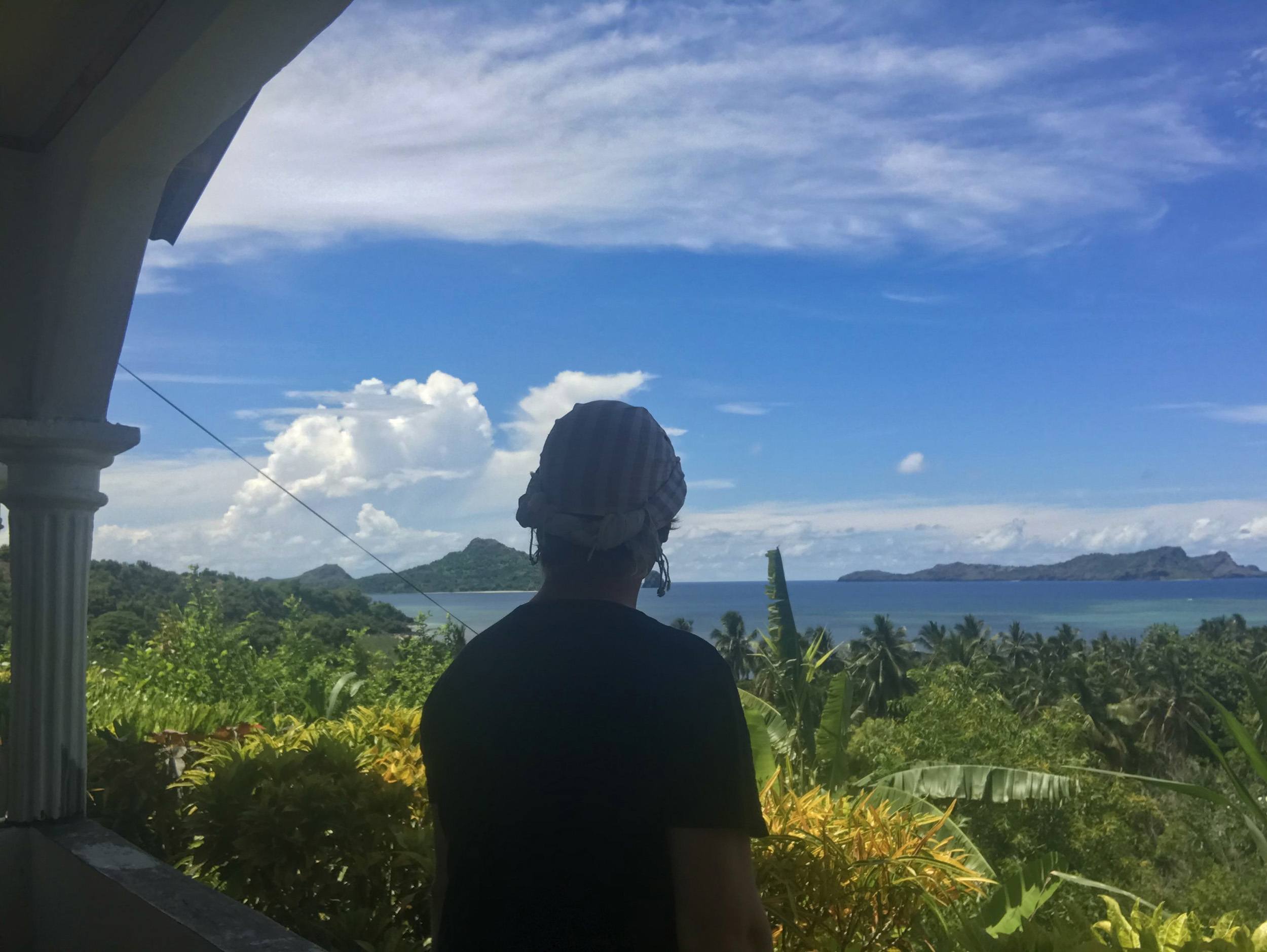

Save this article for future reference!
GRANDE COMORE (Ngazidja)
Grande Comore, the largest of the three islands that make up Comoros, is also the first destination on which visitors step foot in Comoros (unless coming from Mayotte). It’s home to the capital city of Moroni.
But what sets Grande Comore apart from other destinations is its authenticity. Unlike the tourist hotspots of nearby Kenya and Tanzania, Grande Comore has not been overrun by mass tourism. This means that visitors can experience the island in a more genuine way, with fewer crowds and a more authentic cultural experience.
The island's natural beauty is also largely unspoiled (aside from some of the black lava by the water), with lush rainforests that offer a glimpse into the untouched wilderness of the region.
While the island may have its challenges, including limited infrastructure and waste disposal issues, these should not deter you from exploring it. For those seeking a true adventure and a chance to connect with the local culture and environment, Grande Comore is the perfect destination.
With an open mind (and a very keen sense of adventure), you can have a truly unforgettable experience here.
Let’s take a look at some of the island’s key features.
Moroni
It’s the vibrant and bustling heart of the island that offers a fusion of cultures and traditions. With influences from African, Arab, and French cultures, the city has a rich history that is reflected in its architecture, cuisine, and people.

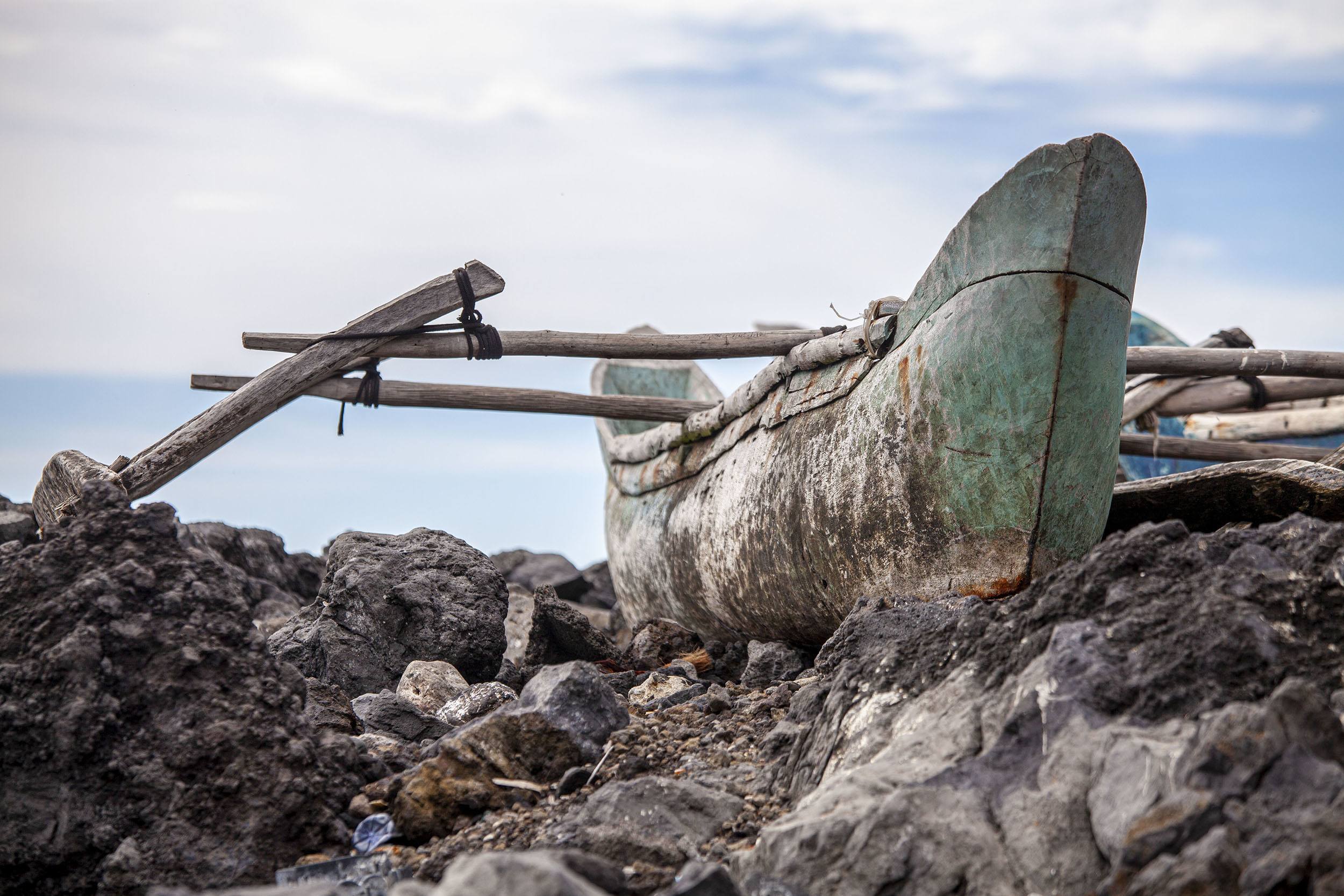
Explore colourful markets, stroll through its neighbourhoods, and relax on its beautiful beaches (such as Itsandra).
I grew fond of its authenticity – it’s entirely unpretentious.

The following sights are some of the highlights.
Itsandra Beach
It’s a hidden gem that shouldn’t be missed. The stretch of white sand is the place to go for a chance to soak up the sun and enjoy crystal-clear Indian Ocean waters.
As the sun begins to set, the beach comes to life with vibrancy. Men play football, their bodies silhouetted against the warm, orange glow of the sunset. Children swim with their families, while other beachgoers gather at the beachside bar (as did I) for a drink.





If you’re looking for a place to relax and unwind or take part in games, go to Itsandra Beach.
Volo Volo Market
It’s a bustling hub of activity at the core of the city. For a full immersion in the sights, sounds, and smells of daily life in Moroni, then the market is a must-visit itinerary stop.
It teems with vendors (on most days) who sell everything from fresh produce and spices to handmade crafts and textiles. The air is often filled with the sounds of lively bargaining (and horns honking, given it’s on a main street, not far from the hospital).


It’s the perfect place to spend an hour or two experiencing the energy of the Comorian people.
Grande Mosquée du Moroni (aka Old Friday Mosque or Ancienne Mosquee du Vendredi)
The mosque is one of the most important religious landmarks in Comoros. Located in the heart of Moroni, access is easy. It’s also highly photogenic (and popularly photographed), so be sure to capture some shots while in the vicinity.

Spend time admiring carvings, and details of the mosque’s façade. Observe the peace of the interior. It’s an important religious landmark for many of the island’s inhabitants.
As call to prayer echoes, feel the tranquillity that ensues (wherever you are in the city), then listen for the rustling of prayer mats. Note the modest dress.
If you visit the mosque and plan to enter the interior, remember to dress modestly (with shoulders, arms, navel, knees, and ankles covered), and remove shoes which are to be left outside.
The Port
The bustling port is the gateway to Comoros and a hub of trade and commerce.
I passed my time observing the comings and goings of ships (particularly brilliant at dusk), watching as goods were unloaded, and being entertained by the hive of activity nearby. The salty sea air is filled with the sounds of clanging chains and the smell of fish. It’s an entertaining and atmospheric way to pass some time.


A highlight is watching fishermen move away from shore (often in dugout canoes) then return later with their daily catches. Get your hands on some fresh fish by visiting a restaurant for lunch or dinner (recommended below).
Medina and the Market
The Medina is a bustling hub of activity. Become immersed in daily life by wandering through the maze of narrow walkways between shops and homes. You’ll find vendors selling all kinds of goods, including produce, crafts, clothing, and food.
Observe the men sitting in groups, playing dominoes and cards. Sit and ask to play (if you have time).
Getting lost is not unusual (as it’s a maze), and don’t be embarrassed if you accidentally enter someone’s house, having mistaken it for a shop (as did I). Apologise (while wielding a hearty smile) and continue weaving your way through the streets.
Iconi (South of Moroni)
Located also on the west coast of Grande Comore, five kilometres south of Moroni, is Iconi. It has many characteristics you’d want of a picturesque, historic village on an island: turquoise waters ideal for swimming and snorkelling; narrow streets with an old-world charm; historic buildings (including a mosque); friendly unabashed locals; and crumbling palace ruins dating to the 16th century.
Taking the journey south of Moroni to Iconi is a worthy endeavour. Spending time in Iconi – even if it’s only for a few hours – will provide a brief history lesson and give you a morning or afternoon of rest, relaxation and then adventure (in rustic surrounds).
Here’s what you can expect to see.
Palace Ruins
Imagine wandering under archways, through courtyards and up the limestone steps of a centuries-old palace. Kids splash in a nearby pond (to the backdrop of a mosque) in synchrony to waves splashing against the shore that you can see through a hole in the crumbling wall.
As you explore the ruins, you’ll feel whispers of the past. Ancient cries may echo against the coral-limestone walls, of women who once jumped from the cliffs adjacent the palace (to avoid capture by Malagasy pirates).
The Palace ruins of Iconi date back to the 16th century. Built under the leadership of Sultan Said Ali bin Said Omar (a notable member of the Ya’aruba dynasty), they were once a majestic residence of the noblesse, and a centre of political and cultural life.
Take your time wandering around. Snap a cheeky shot of you posing through a window.
Iconi Mosque and the Pond
Located behind the Palace ruins is Iconi Mosque, one of the oldest mosques in Comoros. Its white walls and elegant minaret are distinctive and pay architectural homage to the country’s Islamic heritage.
I didn’t venture inside but the same rules as visiting any mosque apply (and they’re listed above).
Spend some time sitting by the pool between the mosque and the ruins – they’re an afternoon favourite of local children who’ll likely want to entertain you and have you play with them.
Trou Du Prophète and beaches around Mitsamiouli (north of Moroni)
37 kilometres north of Moroni (on the northern tip of the island), is Trou du Prophete (along with many other beaches and towns, including Mitsamiouli). According to local lore, it’s where Prophet Mohamed landed. Under French rule, the bay was a favourite anchoring spot for sailors.


After wandering down the long road (if you’re travelling by taxi bousse), you’ll be greeted by historical remnants and a scintillating blue, calm inlet. Wander along the shoreline, follow your nose to ylang ylang plantations, be hypnotised by the dugout canoes gently rocking in the water, and unwind.


This is the place to relax under a baobab tree and let the magic of the surrounding environment envelop you.
There’s accommodation with a small – and very humble – restaurant, so it might be the perfect place to stay for a few days. I had only a day to spare but I could have easily stayed longer.
Other Attractions on Grande Comore (that I didn’t visit)
As I wanted to cover all three islands in the Archipelago (including Moheli and Anjouan), I didn’t have sufficient time to visit the following sites. But they’re worthy of being included (or so I’ve been told).
Mount Karthala
On the southern end of the island is an active volcano called Mouth Karthala, its last eruption occurring in 2005. It takes up over 60% of the island’s surface area.
It’s not a place you go for a stroll; visiting Mount Karthala means hiking and trekking (but it could be achieved starting at 4am, before sunrise, and finishing a while later). Some visitors opt to do a two-day hike, which requires the use of a guide (and it’ll set you back around 100 Euro a day).
The hike-cum-trek begins at 300 metres and ends at the summit of 2,361 metres. From what I’m told, you’ll pass thick jungle, walk across a tundra and see fields of black ash. It’s one of the biggest craters in the world.
Lac Sale
A visit to Lac Sale, a small crater in the northern part of Grande Comore, is another unique experience. The lake’s name, translated “salty lake”, refers to the high concentration of salt in the water.
Surrounded by lush greenery and enclosed by a crater, the green water of the lake is beautiful (or so I’m told). Beyond the crater are beaches and the ocean.
Take a leisurely stroll around the lake’s perimeter and climb the hill behind the lake for a panoramic view.
Recommended Length of Stay - Staying on Grande Comore
Two to four days (depending on how many sites outside of Moroni you wish to see).
Accommodation - Staying on Grande Comore
There are a surprising variety of accommodation options on the island, but most are located in Moroni (the capital city). I stayed between an AirBNB (with an amazing host, Daniel) and Jardin de las Pais.
Do the usual searches (using the links below) and perform a general one using Google – it’ll yield most of the available options.
AirBNB will likely be the most valuable resource in finding accommodation on the island.
For alternative options, browse the following websites:
Accommodation - Staying in Moroni
There are options to suit most budgets (although there are few on the very cheap side i.e., there are no hostels).
Budget:
- Les Arcades
- Farida Lodge
- Club VIP (an apartment building above a restaurant and club, booked via AirBNB)

Mid-range:

- Bungalows Chez Badji
- Hotel Les Alizes
High end (with amenities such as pools, spas and on-site restaurants):
- Le Retaj Hotel
- Golden Tulip Grande Comore Moroni Resort & Spa (a few kilometres north of the capital)
Restaurants - Eating on Grande Comore
When it comes to dining in Moroni, there’s no shortage of options.
- Nassib: located in the Volo Volo market, it offers traditional Comorian dishes and fresh seafood.
- The Tennis Club de Moroni: here you’ll find a variety of French and international cuisine, with views of the Indian Ocean.

- MoCafe: akin to The Tennis Club du Moroni (above), French and International offerings are common menu items.
- Mumbai Palace: For a taste of Indian food (on rue de la Corniche), try this popular spot.
- Grill Le Coraya: Located near Itsandra Beach, it offers a mouthwatering selection of grilled meats and seafood.
- Jardin de la Paix: Located on the road adjacent the hospital, it’s a tranquil spot with a garden oasis in which to chill and appreciate the delicious fare.
- Le Coelecanthe Restaurant et piscine: Located on rue de la Corniche, it offers a unique dining experience and as the name suggests, there’s a pool on site.
- La Select: Not far from Banque Federale des Commerce, this is a local favourite for its traditional Comorian dishes.
- Kader: Behind BDC Bank, Kader offers an authentic taste of local cuisine.


Transportation - Getting Around Grande Comore
There are several options available to travellers for getting around Grande Comore and Moroni. Prices vary.
Here's a breakdown of the options:
Buses
Buses are the most affordable option for getting around Grande Comore. The main bus station in Moroni is located near Volo Volo market. Buses depart regularly to most major towns on the island. Fares typically range from €0.10 to €1, depending on the distance.
Taxi Brousse
Taxi brousses are shared taxis that operate on specific routes around the island (the one I took being between Moroni and the town near Trou du Prophete). They are more expensive than buses but can be more convenient for getting to more remote areas. Fares vary depending on the distance, but typically start at around €2.
Taxis
Taxis are available in Moroni and other major towns on the island. They are more expensive than buses or taxi brousses but can be a more comfortable and convenient option. A ride in Moroni will set you back €3 to €5.
Motorcycle Taxis
Motorcycle taxis, or "motos," are a popular option for short trips around Moroni. They are cheap and convenient, but safety can be a concern. Fares typically start at around €1.
Transportation - Getting to Grande Comore
By Air
Plane
The easiest way to reach Grande Comore (and Comoros) is by air. Prince Said Ibrahim International Airport (HAH) is located near Moroni and receives flights from several international and regional airlines, including:
- Ethiopian Airlines;
- Kenya Airways; and
- Air Austral.
Direct flights to Grande Comore are available from destinations such as:
- Nairobi;
- Addis Ababa;
- Paris; and
- Reunion Island.
Visitors can also take connecting flights (in smaller planes) from other major cities in Comoros, such as Mitsamudu on Anjouan and Fomboni on Moheli.
By Water
Ferry
Grande Comore can also be reached by boat, with several options available depending on your starting point.
The main port on the island is located in Moroni and receives ferries from other islands in the Comoros archipelago, such as Anjouan and Mohéli (but booking can be a challenge).
There are also occasional passenger ferries that arrive from destinations such as Dar es Salaam in Tanzania and Mombasa in Kenya.
Private Boat Charter
Private boat charters are also available, but they can be quite expensive.
Kwassa-Kwassa (Speedboat)
There are overfilled speed boats that travel between the islands in the Comoros archipelago (the ones coming to Grande Comore from the other two islands arriving in the south). Officially, they’re not recommended. Personally, I chose not to use them (as there were reports of two having sunk in the months preceding my visit).
They’re often overloaded with passengers and goods, and have a history of capsizing, leading to fatalities. Although I usually have a keen sense of adventure, I chose to spend a little more on this occasion and fly between the islands (as the ferry timetable and my travel schedule didn’t agree).
In recent years, the Comorian government has made efforts to regulate these boats and improve safety standards, but incidents still occur.
MOHÉLI (Mwali)
Moheli, the smallest of the Comorian islands, is a hidden gem nestled in the Indian Ocean, a paradise for the adventurous traveller seeking an off-the-beaten-path experience.
This low-impact destination is a world away from the hustle and bustle of modern life, offering a tranquil, unspoiled natural beauty that is a balm to the soul. From the rugged, untamed coastline to the dense, lush forests teeming with exotic wildlife, Moheli is a living, breathing testament to the wonders of the natural world.
But make no mistake: this is not easy travel – journeys on Moheli can be long and challenging, as the infrastructure is basic and the roads are often in poor condition.
You’ll be rewarded by being mostly alone as tourism is light – few people make the journey. For those with the heart of an adventurer, the rewards are immeasurable – a chance to discover a place that few have seen, to connect with nature in its purest form, and to experience a way of life that has remained largely unchanged.
I fell in love with Moheli.
Here’s what I saw and experienced.
Nioumachoua (South)
Nioumanchoua is a small village located on the southern side of Moheli (the opposite side to Fomboni which is where you’ll find the airport).
There’s little to the village, aside from food shops, a post office, and peoples’ humble homes (which are often basic concrete structures or huts beside the beach). Roads are often made of dirt and animals roam freely, the occasional goat emerging from beneath an upturned fishing boat on the beach. Wandering through town gives visitors an opportunity to experience authentic village life as it’s been lived through the decades.

Despite the simplicity of village life, Nioumanchoua is not lacking in natural beauty. The lush rainforest that surrounds the village provides a stunning backdrop to the turquoise waters of the Indian Ocean. Expect to find a tranquil and unspoiled natural environment with breath-taking scenery.



Mohéli Marine Park (South)
Going on a speedboat adventure with just a guide through the Moheli Marine Park is another thrilling experience.
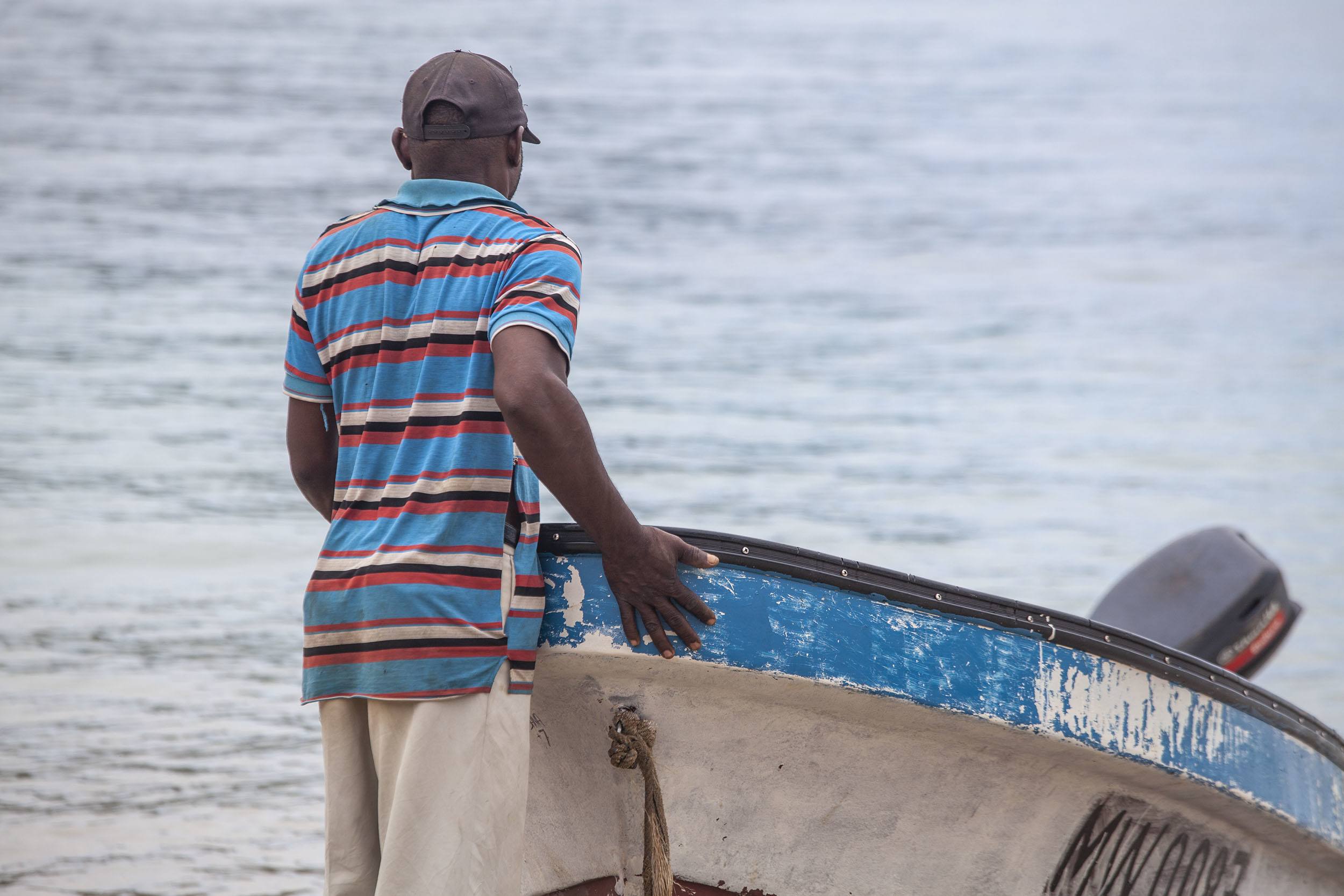

I felt the wind rushing through my hair as I zipped across the turquoise waters, making way towards the peaks that make up the park. My guide pointed out the various wildlife that can be seen along the way, from pods of dolphins (none of which I saw leaping out of the water) to sea turtles lazily swimming near the surface.
Once you arrive at the islands, there are opportunities to snorkel, hike through rainforest (to catch a glimpse of rare bird species) or simply wander around the white sandy shores in contemplation.


As you head back to Nioumanchoua, you'll be filled with awe, I promise!
Livingstone's Fruit Bat Trek and Sightings (South)
For thrill and some adventure, hop on the back of a motorbike (behind a local guide) in the pursuit of seeing Livingstone’s Fruit Bat – one of the largest in the world with a wingspan of 1.5 metres.
The guide took me on a bumpy ride to the forest after which we trekked - in near 100% humidity … then rain - in search of the elusive bat (which I later saw while driving around Anjouan).
The hike goes through lush vegetation, so dense at times it’s difficult to see a way forward. Keen an eye peeled for wildlife such as monkeys and colourful birds.

At the end of the trek, the lovely French- and Swahili-speaking guide escorted me back to Vanilla Lodge and offered me some of his homemade ylang ylang – a popular scent native to Comoros.
Although the trip was arduous (mostly due to the humidity), it was lots of fun. I may not do it again, given the chance, but I’ve included it here for those who wish to engage their sense of adventure.
Itsamia Beach, Baobab Trees and Turtle Spawning Observation (East)
Nestled on the far eastern tip of Moheli lies the village of Itsamia. Despite its small size, this hidden gem is a must-see destination for any traveller seeking to further experience the island’s natural beauty.



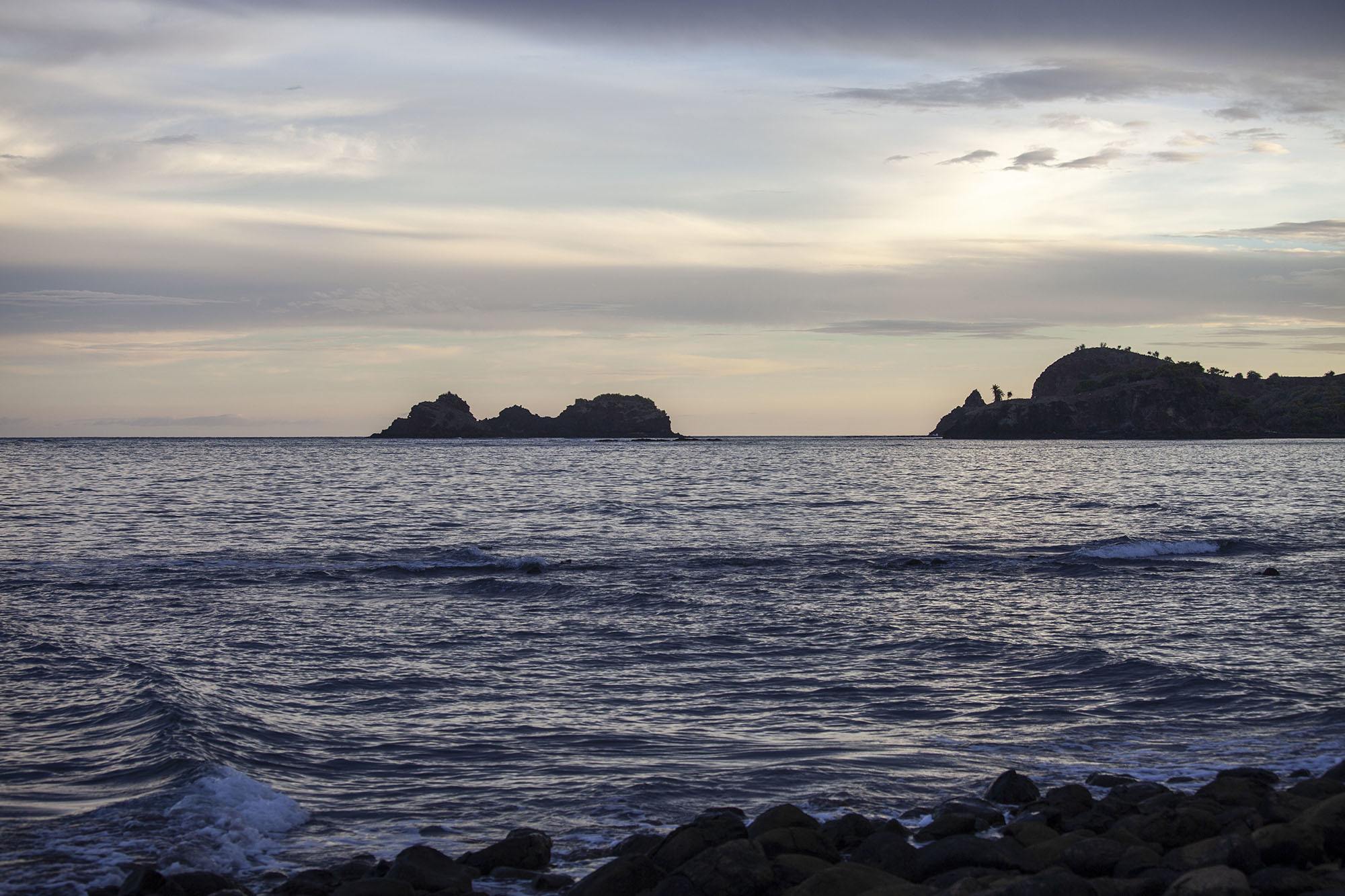
The journey from Nioumanchoua to Itsamia was not without its challenges, as the road had been partially washed away by cyclones, leaving large holes that had to be navigated. However, the stunning scenery that surrounded us (the driver being my companion), made it worth the effort.
Upon arrival in Itsamia, take a leisurely stroll along the beach, go for a dip and explore the baobab trees standing nearby. I was lucky enough to meet a Comorian ex-boxer who guided me for the afternoon (even though we didn’t speak a common language).


One of the highlights of visiting Itsamia is the opportunity to witness sea turtles coming ashore to lay their eggs. I was alone, waiting until after dusk for them to appear. Sadly, none came ashore. So, I’d recommend staying a night or two to increase your chances of seeing them. It would be a magical experience.
As you explore the village, you'll encounter friendly locals who are eager to chat. I had the opportunity to lend a helping hand, providing first aid to a young man with a severe wound on his leg. He was grateful for the care and attention, and I was thankful I could provide help (particularly in a low-resource area).

At the end of the day, I returned to Vanilla Lodge with memories that will last a lifetime.
Recommended Length of Stay - Staying on Mohéli
Given the difficulty getting around, a lack of infrastructure and having sights spread across the island, a minimum of three days are needed (but more if you want a truly authentic and fully immersive experience).
Accommodation - Staying on Mohéli
There are few accommodation options on Moheli, and none that I researched are in the low-to-mid budget range. I stayed at Vanilla Lodge and although it was more than I could afford, I have no regrets. The views are spectacular, the staff are kind and supportive, and the location is ideal.
Here are a few places you could consider staying (but it’s not a comprehensive list):
- Laka Lodge: Located on the southern coast of Moheli, Laka Lodge is a cozy, eco-friendly hotel that offers a unique experience for travellers seeking a peaceful and secluded retreat. Accommodation options include bungalows and villas with sea views.
- Vanilla Lodge: Located on the southern coast of Moheli, Vanilla Lodge is a cozy eco-lodge that offers bungalows with sea views and a restaurant serving local and international cuisine.



- Le Relais de Singani: On the northern coast, in Fomboni (the town attached to the island’s airport), is Le Relais de Singani. Rooms are functional, food is available and the service is friendly. There are water views from the property.
You can try researching using the websites listed here, but it's likely few will yield results:
Restaurants - Eating on Mohéli
Outside of Fomboni, you’ll need to visit hotel restaurants (such as those at Vanilla Lodge and Laka Lodge in the south) for quality food.
Walking through villages (such as Itsamia) may lead you to local establishments, but you may also need to ask for advice in locating them. Locals are helpful so don’t be afraid of asking for directions.
There is plenty of water around and there are lots of fishermen, so getting your hands on some fresh fish shouldn’t be too hard.



Transportation - Getting Around Mohéli
Moheli is a small island, and transportation options for visitors are limited.
I contacted the owner and manager of Vanilla Lodge in advance, and he kindly arranged for a car to be sent to collect me (the journey for which I paid … and I was collected by one of his family members).
Here are a few other options:
By Road
Bus
They run from Fomboni to many destinations on the island. But they stop running by midday (which is problematic if your flight arrives after lunch). They depart from the market. Locals refer to them as ‘taxis’ which can be very confusing. If you’re travelling to Fomboni from anywhere else on the island, then I wish you good luck. Reserve a seat the day before and be at the stop very early.
Taxi
They are few and far between. I’d recommend asking for assistance from pre-booked accommodation for transportation options.
By Water
Boat
Rent a boat or join a tour to explore the coastline and nearby islands. This can be a great way to see Moheli's stunning beaches and marine life.
Transportation - Getting to Mohéli
By Air
The airport in Fomboni is called Mohéli Bandar Es Eslam Airport. There are daily flights to Moheli from the other islands (but there are frequent issue with cancellations and over-booking).
Tickets can be purchased in tourist agencies, most of which are in Moroni (on Grande Comore).
By Water
Kwassa-Kwassa (Speedboat)
As indicated under this section for Grande Comore, there are overfilled speedboats that travel between the three main islands of Grande Comore, Moheli and Anjouan.
Officially, they’re not recommended. I chose not to use them (as there were reports of two having sunk in the months preceding my visit).
They’re often overloaded with passengers and goods and have a history of capsizing.
ANJOUAN (Nzwani)
Looking for another adventure that's also off the tourist radar? Anjouan beckons, the third Comorian island in the trio that’s bursting with untold natural beauty and cultural wonders that will take your breath away.
Feel the thrill of exploring the untouched rainforests, with their diverse flora and fauna that seem straight out of a fairytale. Swim in the turquoise waters, alive with vibrant sea life. And when it comes to immersing yourself in the island's heritage, Anjouan's rich and authentic traditions are humbling.
From the winding streets of Mutsamudu's bustling markets to the charming hilltop villages that offer stunning panoramic views, Anjouan promises a trip like no other, a feast for all senses.
It’s yet another gem in Comoros waiting to be uncovered.
Here are the sights I saw and the experiences I had while in Anjouan.
Mutsamudu (North-West)
Welcome to Mutsamudu, the main city on the island of Anjouan. It’s a bustling port city with a rich cultural heritage and a vibrant market scene.

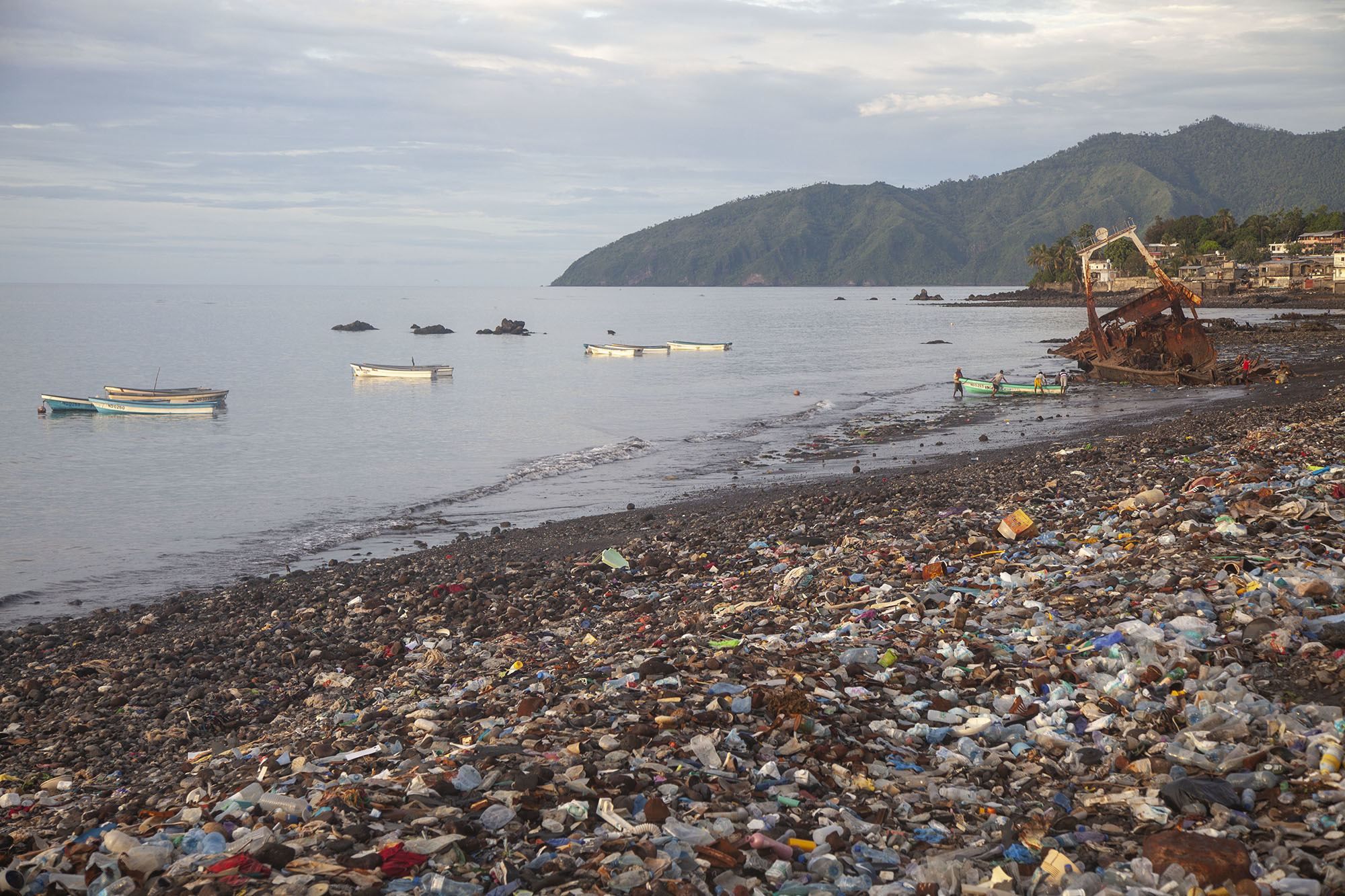
The winding alleys, whitewashed buildings, and traditional mosques are a testament to the island's long and storied history, while its lively markets offer a glimpse into the everyday life of the local population.
Whether you're exploring the town's historic landmarks, wandering through the markets, or simply soaking up the sun on one of the nearby beaches, Mutsamudu is sure to enchant you – it did me.

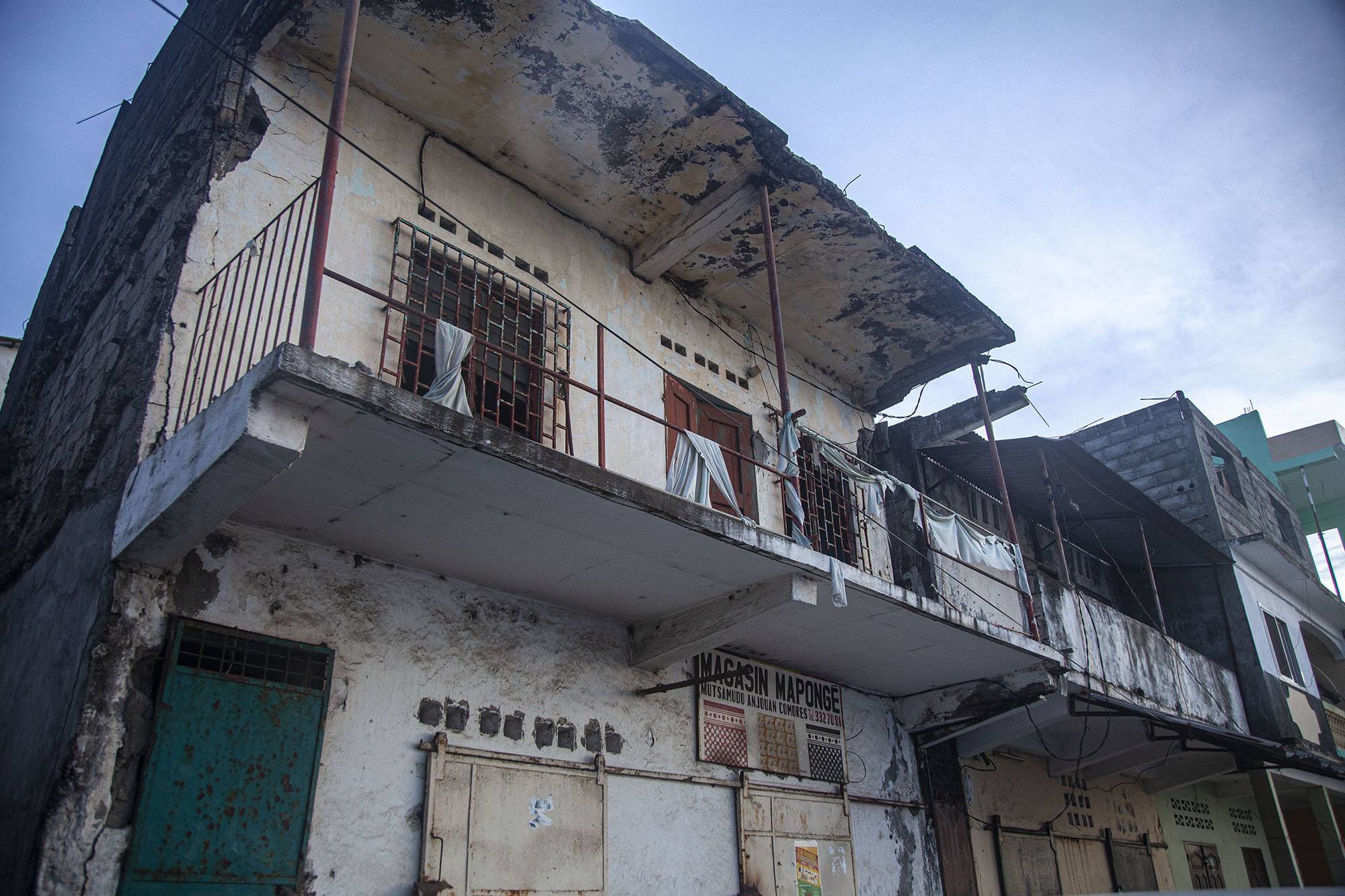
Here are a few of the things you can consider doing with a day or two in Mutsamudu.
Waterfall
Are you ready for an adventure off the beaten path in Mutsamudu? Follow a hand-drawn map provided by a friendly hotel manager to discover a hidden waterfall (albeit a small one). The road leading off the Marche Municipale (outdoor market) will take you into the forest, where you'll be surrounded by lush greenery and the sound of rushing water.

You'll feel like a true explorer as you navigate the twisting path, and when you finally arrive at the waterfall, you'll be rewarded. Take a refreshing dip in the waterhole at its base (if you feel it’s sufficiently clean … I didn’t) and join in the fun as local children (mostly boys) splash around and play. Observe as people from the nearby village bathe in parts of the stream, prepare food (such as washing and cutting mangoes) or attend to other chores of daily living.

It's an adventure!
I wouldn’t have found it had it not been for the manager of Karama Hotel! Don’t be afraid to ask for directions.
Marche Municipale (Outdoor Market)
A visit to the Marche Municipale in Mutsamudu is a must-do experience for anyone looking to immerse themselves in local culture. This bustling outdoor market is in the heart of the city and is a vibrant hub of activity.
You'll find vendors selling everything from fresh fruits and vegetables to clothing. Be sure to keep an eye out for the colourful spices, fragrant herbs, and local delicacies like mabawa, a popular fried dough snack.

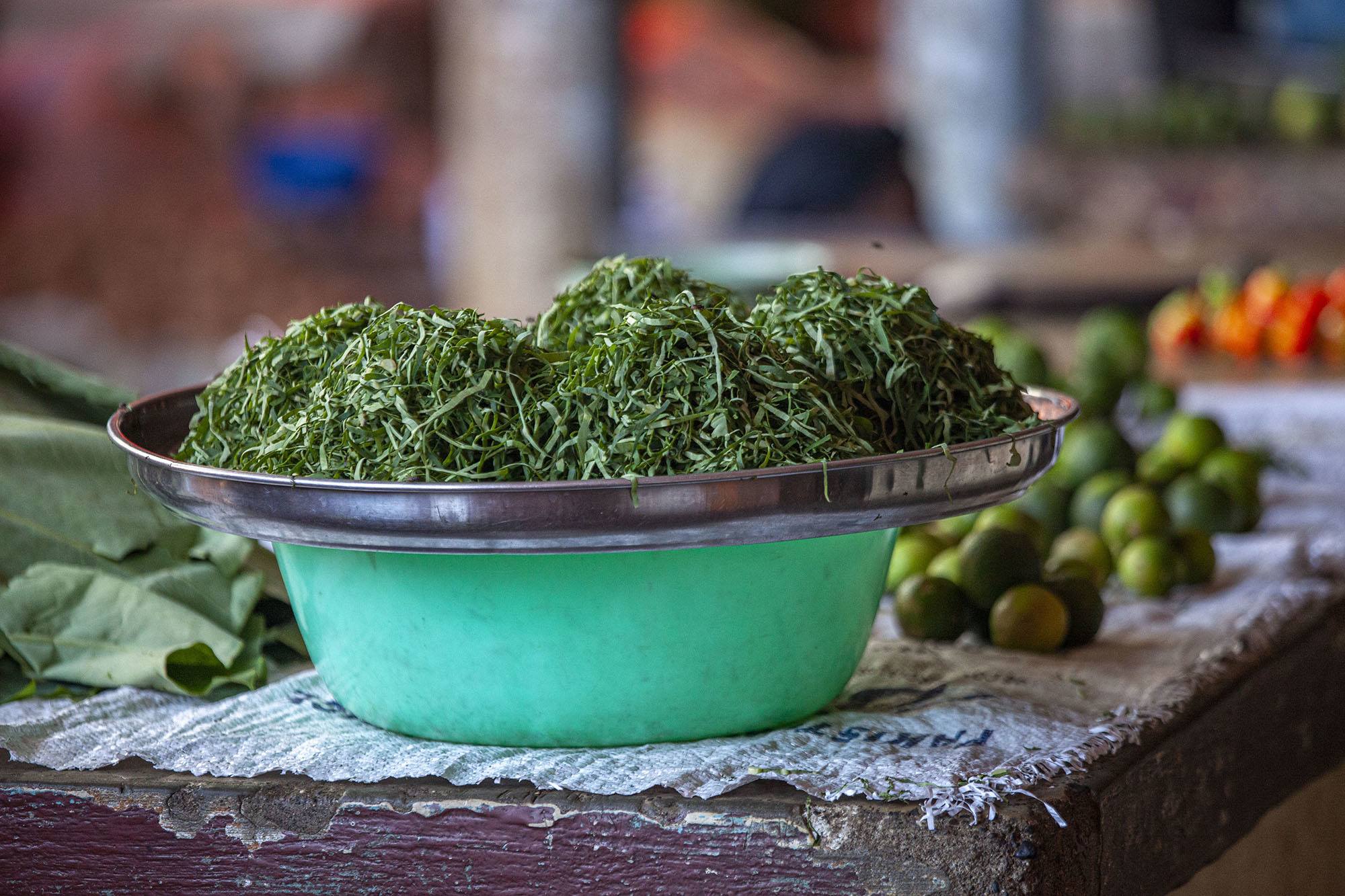

As you wander through the market, you'll be greeted by friendly vendors and the sounds of bargaining and haggling.



It was an authentic and lively experience for me!
Citadel
The citadel is a historic landmark that's not to be missed.
Built in the 15th century, it played a crucial role in the island's defence against foreign invaders. Today, visitors can explore the winding passageways leading to its entrance and experience breathtaking views (the best in Mutsamudu) of the city. Imagine what life was like for the soldiers who once called it home.


To get there, head to the Old Town and look for the signs leading up the hill (if you can find them). Otherwise, use MapsMe or simply ask a local for directions. People are only too happy to help.
It's a bit of a climb, but as I said before, the views are well worth it. Once you arrive, take your time exploring the citadel's nooks and crannies, and be sure to snap a few photos of the stunning views from the top.
Fish Market
If you're a seafood lover (or you aren’t but you can tolerate the fishy smell), a visit to the fish market in Mutsamudu is a must-do on your Anjouan itinerary.
Located just a short distance from Karama Hotel, the market is a hub of activity (particularly in the early evening), with fishmongers slicing and dicing all manner of fresh seafood, including tuna, the local staple.


The fish is sourced from the surrounding waters and is often caught and sold on the same day, ensuring maximum freshness and flavour.
So head down to the market, take in the sights and sounds, and maybe even pick up some fresh seafood to cook for dinner (if your hotel or residence has cooking facilities … mine did not).
Al Amal Beach
Al Amal Beach and Hotel is a sight in the top end of Mutsamudu (a long walk from my lodgings at Karama Hotel).
The secluded beach boasts crystal-clear waters and soft white sand, offering the perfect escape from the hustle and bustle of town.


The hotel on the beach is a peaceful retreat, where you can relax and enjoy the stunning scenery (although the pool was empty during my day-visit). The restaurant serves decent fare at reasonable prices.
Whether you want to swim, sunbathe, or take a stroll along the shore, Al Amal Beach is the place to unwind.
En route to Al Amal, it started raining and I was invited into the home of a beautiful Comorian family to shelter in place until the storm passed. They offered me food and I watched a film with the children. It was one of the nicest moments of my time on Anjouan.
Unexpected things happen all the time when we are open to new experiences.
Day Trip Around Island
If you're short on time and want to get a glimpse of the stunning landscapes and attractions of Anjouan, a day trip with a local driver (like Laidine) is a great option. The day will be filled with scenic drives along the island's winding roads, passing through lush forests and between towering mountains.
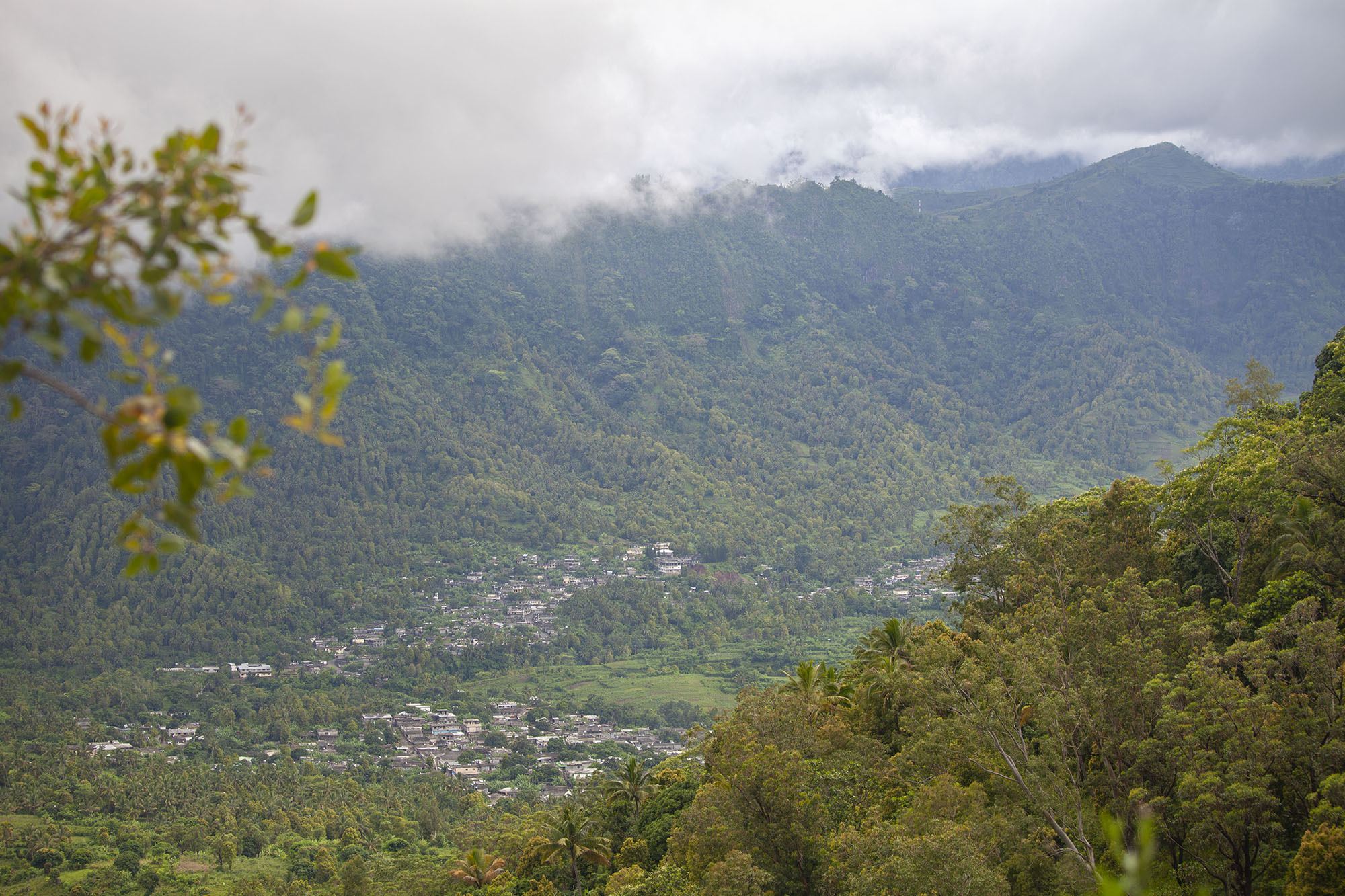

While some of the roads along the western coast may be in poor condition (which will slow the journey down), taking this route will showcase the island's beauty.
Despite being a long day, the experience is well worth it to get a taste of what Anjouan has to offer.
It was during the drive through the interior that I saw Livingstone's Fruit Bats (which were elusive during my rainforest trek on Moheli).
Here’s what I saw and did during the day trip.
Tsembehou (Centre of Island)
Nestled in an interior valley of Anjouan (in the centre of the island) and ringed with cliffs, is Tsembehou (the third-largest city in Anjouan).
Of highlight is the bridge overlooking a ravine which provides stunning views of the island’s nature.


As Laidine (the guide) and I didn’t speak a common language, there was no discussion about visiting other sites in the city. We simply stopped for this photo opportunity then drove to the next destination on the itinerary. So, I can’t tell you much more about it! But I believe it’s on the way to the other sites (listed below).
Dzia Landze Lake (Centre of Island)
Dzia Landze Lake is a natural freshwater lake in the island’s interior that’s surrounded by lush greenery and towering mountains - a stunning setting for a visit.
However, visitors should be aware that the path leading from the road to the lake is fairly steep and muddy, so proper shoes are recommended. I had flip flops (stupidly) which made the journey a little treacherous (considering it had recently rained).

To get the best shots of the lake, you could climb up to the rocky outcropping on the opposite side of the lake, which offers a stunning panoramic view (and is something I didn't do, as you can see from the picture above and the one below).
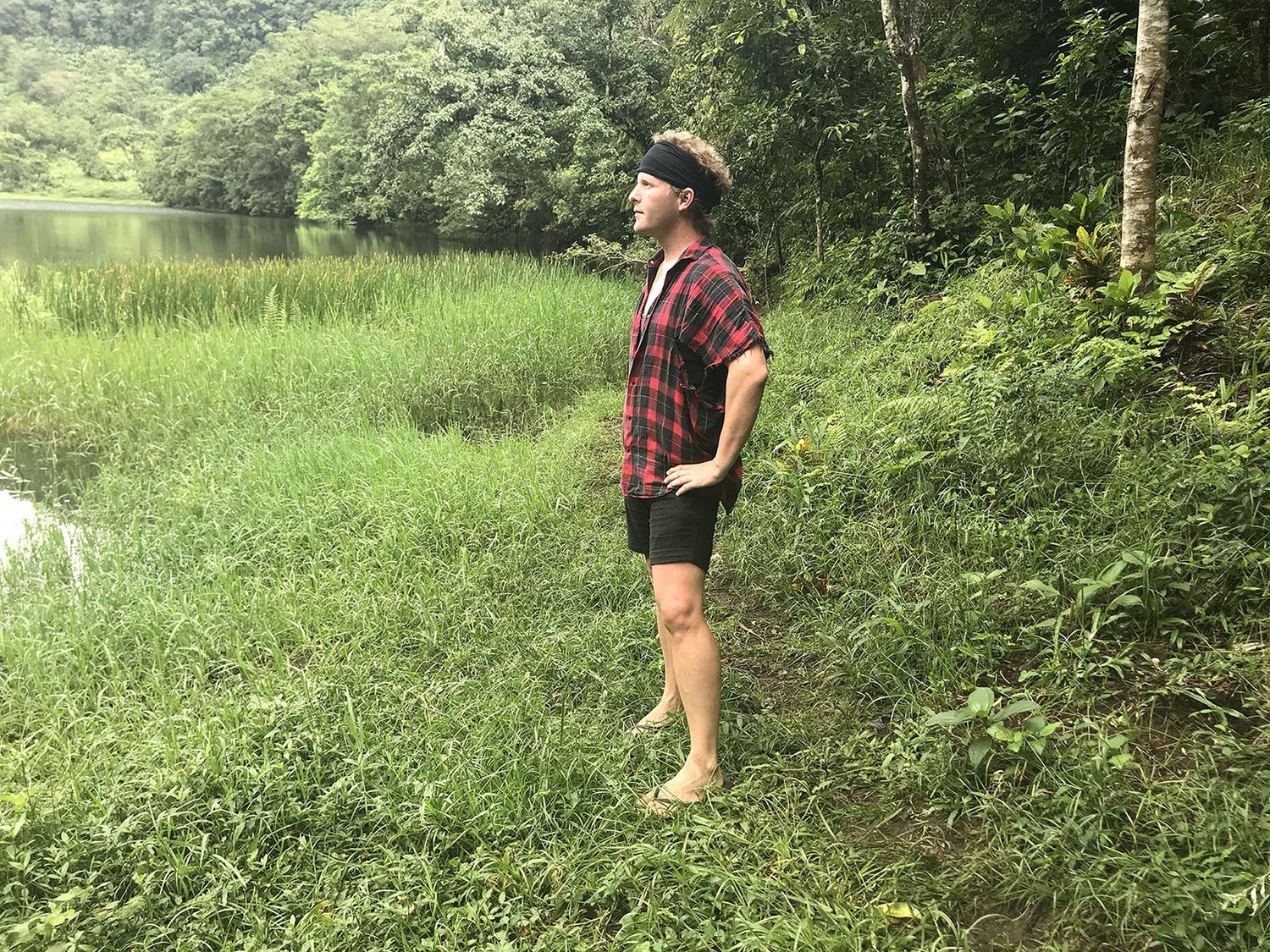
Including a visit to Dzia Landze Lake as part of your day trip is a great way to experience some of Anjouan’s natural beauty.
Moya Beach and Bungalows (South of Island)
Moya is another stop that I’d recommend including on your day trip itinerary.
What makes Moya special is its beach, which boasts crystal-clear waters and soft white sand. Take a dip in the water then relax under the shade of the palm trees. Afterwards, try some fresh seafood at a local restaurant.
Even if the weather isn't great (like during my visit when it was pouring rain), there are still some great options for shelter and dining.

Laidine (my guide) and I visited Hotel Le Sultan, a picturesque series of bungalows by the beach. We ate fresh grilled fish accompanied by fried banana while in the company of a French couple enjoying a more long-term retreat in Moya.


Moya is a great addition to an itinerary exploring Anjouan (particularly if the weather is sunny).
Recommended Length of Stay - Staying on Anjouan
Two to four days (depending on how much time you want to spend outside of Mutsamudu).
Accommodation - Staying on Anjouan
There are more accommodation options on Anjouan than on Moheli. I stayed at Karama Hotel in Mutsamudu and thoroughly enjoyed myself. The staff were very helpful and hospitable, the room was clean (with a sea view and air-conditioning), and the food at the restaurant was fresh and tasty.
Here are a few places you could consider staying (but it’s not a comprehensive list):
- Karama Hotel (Mutsamudu)
- Al Amal Hotel (Mutsamudu)
- Oceanis Hotel (Mutsamudu)
- Le Sultan Hotel (Moya)
- Auberge Maouwa Valley (Moya)
You can try researching accommodation using the websites listed here:


Restaurants - Eating on Anjouan
There are a few restaurants in Mutsamudu yet I ate a few of them. Most of my evenings were spent at Karama Hotel in their restaurant, mixing with the Comorian guests and the pet lemur.
Here are the options (in Mutsamudu, not in Anjouan at large) few of which I can personally recommend:
- Karama Hotel: The hotel has a restaurant that offers a limited range of international and Comorian dishes. There’s seating inside and outside (on a deck overlooking the Indian Ocean) and it’s home to a lovely pet lemur … it often sat on my shoulder while I was dining. The location is very central.
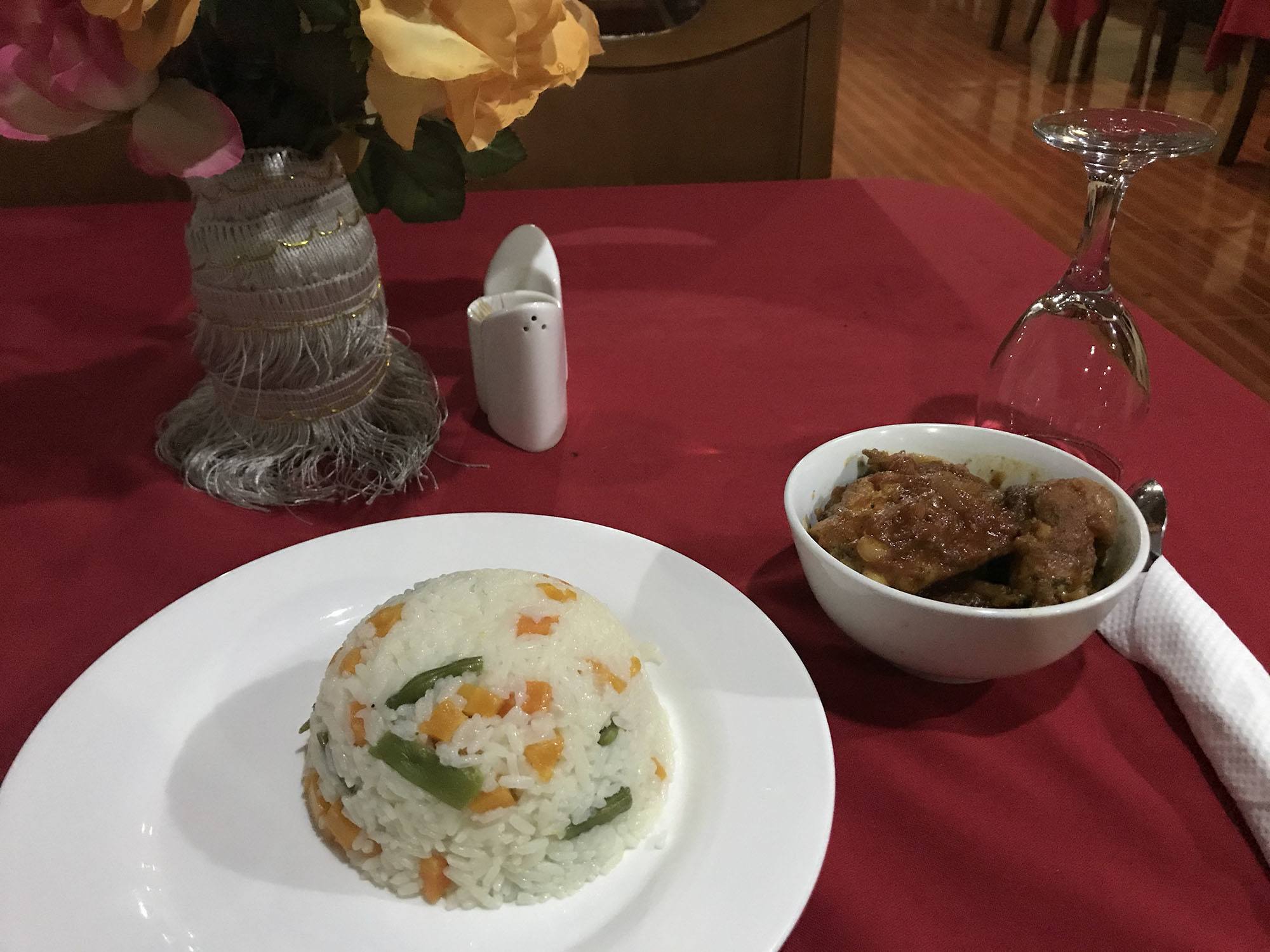
- Hotel Al Amal: Located on the outskirts of Mutsamudu, the restaurant offers a variety of dishes. They have indoor and outdoor seating options. I saw on the deck overlooking the Ocean … and it was sublime.

- Al Quittor: The restaurant offers a variety of Comorian dishes, including seafood, and is popular with locals and visitors alike. It is located in the heart of Mutsamudu.
Transportation - Getting Around Anjouan
Taxi
They're a common mode of transportation on the island. Find them at the airport, and in town. Taxis in Anjouan are usually shared, and fares are negotiated with the driver
Minibus
Known as "dolés," minibuses are another common mode of transportation on the island. They are shared and follow a set route.
Private car with driver/4x4
Speak to the hotel staff and they can arrange a car with a driver to take you around the island or to specific destinations on Anjouan. The manager of Karama Hotel did this for me.
Transportation - Getting to Anjouan
By Air
The airport in Mutsamudu is called Aéroport de Ouani Anjouan. There are daily flights to Anjouan from the other islands (but there are frequent issue with cancellations and over-booking).
Tickets can be purchased in tourist agencies, most of which are in Moroni (on Grande Comore).
By Water
Kwassa-Kwassa (Speedboat)
As indicated under this section for Grande Comore and Moheli, there are overfilled speedboats that travel between the three main islands of Grande Comore, Moheli and Anjouan.
Officially, they’re not recommended. I chose not to use them (as there were reports of two having sunk in the months preceding my visit).
They’re often overloaded with passengers and goods and have a history of capsizing.
ULTIMATE GUIDE TO VISITING COMOROS - FURTHER INFORMATION
There are inclusions and exclusions that can be completed to personalise the itinerary, depending on personal preferences. It can be done within the timeframes suggested, slowed down or even accelerated a little.
It really does depend on you, your budget, preferences and time constraints. It also depends a bit on availability of services in Comoros (as infrastructure isn't great and things like flights can be cancelled without warning). Some flexibility is needed.
Here's some additional information that may help you plan and prepare for your trip to Comoros.
How to Get to Comoros
By Air
Plane
The main airport in Comoros is Prince Said Ibrahim International Airport, which is served by a number of airlines including:
- Air France;
- Air Austral;
- East African Air Express;
- Air Madagascar;
- Air Tanzania;
- Turkish Airlines;
- Ethiopian Airlines; and
- Kenya Airways.
These airlines provide regular flights from some major international airports in Europe, Africa, and the Middle East.
By Water
Freighter
There are some freighters travel to Moroni from Zanzibar and Madagascar. This option is cheaper than flying but it takes much more time. Use www.sgtm.com to research passenger boat movements. Note that the website is in French.
How to Get into Comoros - Visa Formalities
Ensure you have a printed hotel, guesthouse or AIRBNB reservation with you to present to immigration for acquiring a visa on arrival at Prince Said Ibrahim International Airport along with a printed return or onward travel plane ticket.
I knew it was required but was unable to find a working printer during the 48-hour period prior to my departure from Mauritius. I was unnerved but arrived with screenshots and PDFs on my iPhone.
It wasn’t satisfactory for immigration. Had it not been for a kind-hearted taxi driver by the name of El Arif standing near the immigration desk (yes the arrivals hall is just one big open room with no divisions between immigration, baggage claim and the exit) who noted my predicament and knew Daniel, the AirBNB host with whom I was going to be staying, I’d likely have been detained and perhaps sent away on a flight the next day. He offered to vouch for me, bringing a printed copy of the reservation back to the airport after dropping me off. I felt the fool (even though I couldn’t print despite trying).
I tried reasoning with the immigration staff, asking, “What happens to the piece of paper once you’ve finished with it?” It gets given back to the passenger - French-African bureaucracy at its best!
How to Book Accommodation in Comoros
Consult the following websites for up to date information regarding prices and availability of accommodation throughout Comoros:
If you're having difficulty finding anything, then try searching in French (as many guesthouse owners advertise in French only, such as on Moheli).
AirBNB and Booking.com are likely going to be your best options for finding accommodation.
For specific recommendations, refer to the various sections throughout this guide named in like manner i.e., Accommodation - Staying on Moheli.
Dangers and Annoyances in Comoros
Comoros is generally a safe country for travellers, but like any destination, it is important to take precautions to ensure your safety.
Petty crime such as pickpocketing can occur in tourist areas and crowded places (including Volo Volo market), so it is important to keep a close eye on your belongings and avoid carrying large amounts of cash or valuable items.
It's generally best (in many countries) to avoid walking alone at night - take a taxi instead. I had no issues walking around at night anywhere in Comoros but I can't say with certainty that nothing would ever have happened.
Health facilities are developing world standard so do your best to avoid serious accident and injury by using common sense (which involves not taking any unnecessary risks) . If a serious accident does occur, then you may need to be airlifted to Kenya or Tanzania (so ensure this would be covered by your travel and medical insurance).
By taking these precautions, you can ensure a safe and enjoyable trip to Comoros.
Communicating Effectively in Comoros
Comoros is a multilingual country with three official languages: Shikomoro (aka Comorian, a blend of Swahili and Arabic), French, and Arabic.
Comorian is the most widely spoken language. It’s a Bantu language with influences from Arabic and French.
French is commonly used in government, business (including hotels and restaurants and many other tourism services), and education, while Arabic is used mainly in religious contexts.
Many people in Comoros also speak Swahili, which is used as a lingua franca throughout East Africa.
Visitors to Comoros who do not speak Comorian, French, or Arabic (such as me) may find it helpful to use translation apps including Google Translate or iTranslate (if they work), which can be used offline (but they didn't work reliably for me).
Overall, the linguistic diversity of Comoros reflects the country's rich cultural heritage and adds to its appeal as an interesting destination.
Staying Connected in Comoros – SIM Card options
There are two main telecom providers in Comoros. You can get a SIM card from either of them.
Here's an overview of them, their package options, and where to find their stores:
- Comores Telecom (Telma): Comores Telecom, also known as Telma, is the largest telecom provider in the country. They offer a range of prepaid SIM cards for visitors, including the "Tourist SIM" which is designed specifically for tourists. It costs around 10,000 KMF (approximately $23 USD) and includes 2 GB of data, 30 minutes of talk time, and 30 SMS messages. Telma stores can be found in Moroni and other major cities.
- Comores Telecom (Huri): Comores Telecom also operates under the brand name "Huri" and offers a range of prepaid SIM cards. Their "Tourist SIM" costs around 5,000 KMF (approximately $11 USD) and includes 2 GB of data, 30 minutes of talk time, and 30 SMS messages. Huri stores can be found in Moroni and other major cities. This is the one I bought and I was very happy with the service.
Note that you can also purchase SIM cards from small mobile phone shops and kiosks in some areas, but it's recommended to purchase from a Telma or Huri store to ensure that the SIM card is legitimate and activated properly.
Currency and Money Matters - Spending in Comoros
The official currency in Comoros is the Comorian Franc (KMF), which is used for many transactions.
While Euros may be accepted in some places, it's generally recommended to have local currency on hand for day-to-day expenses.
ATMs can be scarce in Comoros, especially outside of major cities, and may not always work or have cash available. Therefore, ensure you have enough cash on hand to cover expenses.
Be aware of the existence of unofficial money in the form of the "zariba," a system of informal exchange that’s common in some parts of the country. Be cautious when using this system and only exchange money with trusted individuals (as did I, based on recommendations from the AirBNB host who’d been living in the country for many years).
Plan ahead and be prepared with local currency when travelling in Comoros.
Solo Travel in Comoros: What’s it Like?
Solo travel in Comoros can be a rewarding experience, but it's important to take certain precautions and plan ahead. Here is some general advice I always share to anyone planning to travel alone:
- be open to engagement with the local population - it'll help reduce feelings of loneliness that may arise;
- transport reading material or some form of entertainment with you for the long journeys;
- maintain an open-minded disposition particularly to new experiences wherever they present which will also serve to heighten intrigue and reduce the possibility of lonely thoughts creeping into your mind and heart;
- take a mobile phone (that's unlocked) with you and buy a local SIM card so that you can access the rest of the world if - and more realistically when - the need arises (such as times during which you are feeling isolated, frightened or lonely); and
- remember that no experience lasts forever. If you do start feeling isolated, lonely or anxious, remind yourself that you won't be there forever. Focus on the good you've experienced, remind yourself of your aptitude for overcoming barriers by thinking of past experiences of success and stoicism and treat yourself to something nice and familiar (whether it be a Netflix movie, down time with a glass of red wine and a book or an ice cream savoured while sitting before beautiful scenery).
Here are some tips for solo travellers specific to visiting Comoros:
- Respect local customs and dress modestly: Comoros is a predominantly Muslim country, so it’s important to be respectful of local customs and dress codes so as not to cause offence or draw unwanted attention to yourself.
- Learn some basic French or Comorian: French is widely spoken in Comoros and knowing some basic phrases can help with communication. Comorian is also spoken widely and knowing a few words or phrases can be helpful in connecting with locals.
- Choose your accommodation carefully: Look for accommodation that has good reviews and is located in a safe area. It's also a good idea to inform your accommodation of your solo travel plans and itinerary.
By following these tips, you’ll increase your chances of having a safe and enjoyable experience in Comoros.
ULTIMATE GUIDE TO VISITING COMOROS - CONCLUSION
There you have the journey I undertook in Comoros, a unique trip unlike most others. It offered a chance to experience a world that is mostly untouched by tourism with streaks of authenticity running through the core of each island.
Comoros is a destination that is sure to leave a lasting impression. It's authentic. It's (mostly) untouched. It's engrossing. It got under my skin and it will hopefully do the same for you. But plan carefully to ensure you get the most out of it.
Please feel free to contact me regarding anything you’ve read in this guide.
















































































Returned from Comoros a week ago (9 nights trip). Picked wrong season (it was raining too much) and wrong time (presidential elections and following protests and curfew). The place is depressing, black lava rocks and ash mixed with trash, bad roads, smog in the city, empty shops, overpriced restaurants. Even Haiti was better.
Hi Ivan,
Thank you for sharing your candid feedback. It sounds like your experience was indeed challenging, compounded by the unfortunate timing of weather and political events. Travel, as we know, has its array of uncontrollable elements, and it seems you’ve had a run with quite a few of them all in one trip.
Comoros does have its share of issues (some of which are mentioned in this article), and it’s clear that these significantly impacted your trip. Your perspective is valuable, and can hopefully serve as an important note for future travellers planning to visit the country, particularly regarding the timing of their visits.
Despite the conditions you faced, I hope there were moments within your journey that offered a glimpse into the unique beauty that Comoros holds (such as the nature on Moheli). For me, it’s often in these challenging destinations that I find the most profound stories and learnings.
Thank you again for your honesty, and I hope your next adventure brings more favourable conditions.
Ben
Exploring the Hidden Gem ofComoros
reveals a stunning blend of unspoiled beaches, lush rainforests, and rich cultural heritage. Its serene landscapes, vibrant traditions, and warm hospitality make it a unique and unforgettable destination.